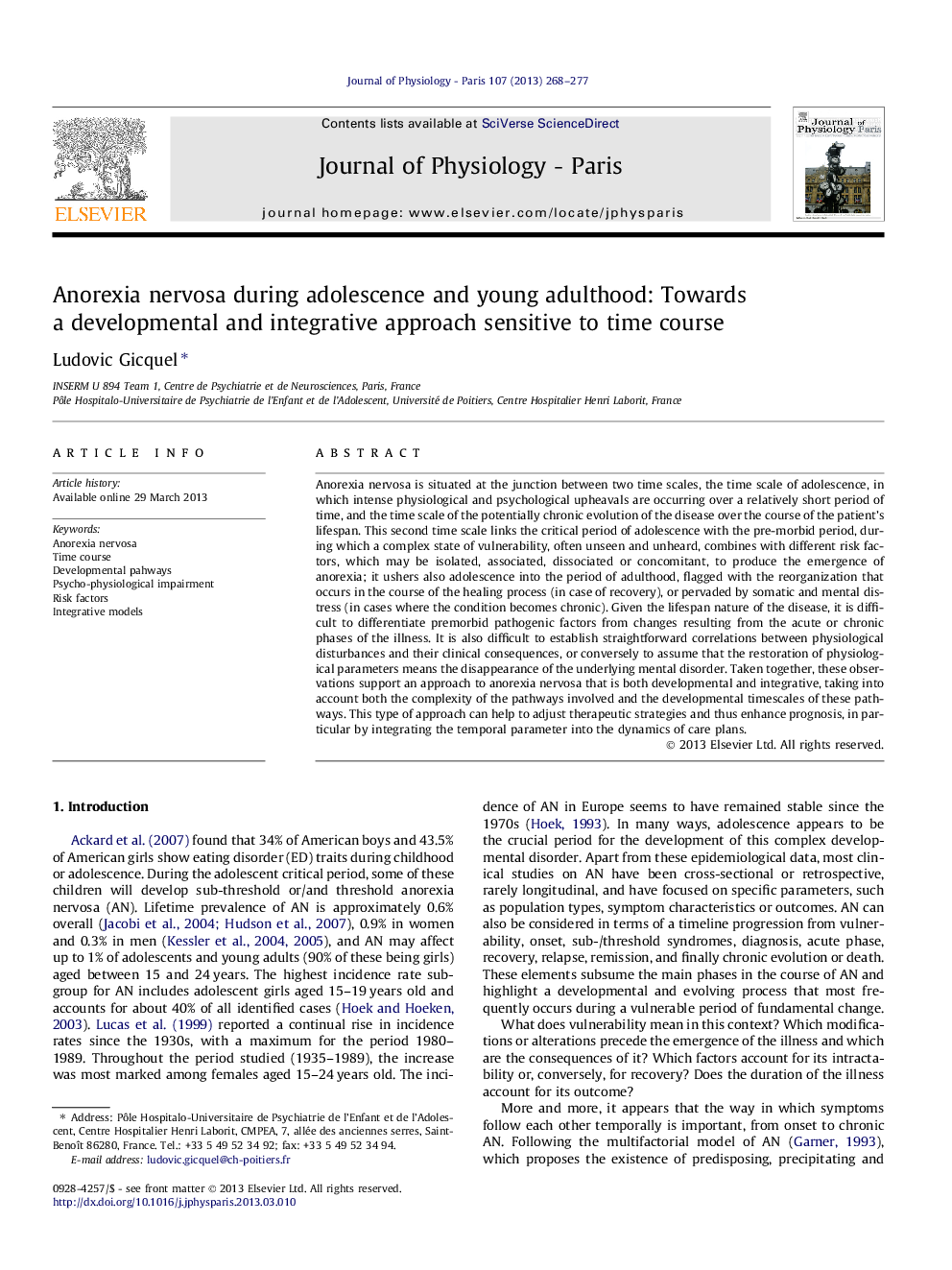| Article ID | Journal | Published Year | Pages | File Type |
|---|---|---|---|---|
| 2842341 | Journal of Physiology-Paris | 2013 | 10 Pages |
Anorexia nervosa is situated at the junction between two time scales, the time scale of adolescence, in which intense physiological and psychological upheavals are occurring over a relatively short period of time, and the time scale of the potentially chronic evolution of the disease over the course of the patient’s lifespan. This second time scale links the critical period of adolescence with the pre-morbid period, during which a complex state of vulnerability, often unseen and unheard, combines with different risk factors, which may be isolated, associated, dissociated or concomitant, to produce the emergence of anorexia; it ushers also adolescence into the period of adulthood, flagged with the reorganization that occurs in the course of the healing process (in case of recovery), or pervaded by somatic and mental distress (in cases where the condition becomes chronic). Given the lifespan nature of the disease, it is difficult to differentiate premorbid pathogenic factors from changes resulting from the acute or chronic phases of the illness. It is also difficult to establish straightforward correlations between physiological disturbances and their clinical consequences, or conversely to assume that the restoration of physiological parameters means the disappearance of the underlying mental disorder. Taken together, these observations support an approach to anorexia nervosa that is both developmental and integrative, taking into account both the complexity of the pathways involved and the developmental timescales of these pathways. This type of approach can help to adjust therapeutic strategies and thus enhance prognosis, in particular by integrating the temporal parameter into the dynamics of care plans.
